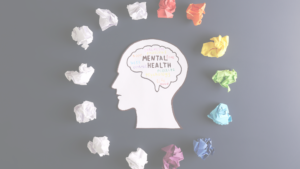When most people hear healthy movement, they think exercise or long-winded gym sessions or looking better or weight loss. But, movement is so much more than vanity and doesn’t have to involve ‘working out’.
Human life has become structured in a way that makes it very easy for us to avoid movement – even more so in the last 12 months.
We sit down to travel to work. At work we sit at our desks for 8 hours a day. Then we come home, and we sit down to relax until it’s time to go to bed.
With many of us now working from home it’s even easier to forget about moving. Getting lost in our screens and eating at our makeshift desks may have become the norm now that we’re no longer able to go for lunchtime walks with our colleagues and some days you may find yourself moving no further than from your desk to the fridge and back.
But it’s important to remember that that’s not what our bodies are built for. Creaky knees, stiff backs and getting breathless from going up the stairs aren’t only signs that you aren’t as healthy as you could be, but also that you aren’t getting enough quality daily movement.
So how can moving more benefit the health of our bodies?
Musculoskeletal Fitness
In layman’s terms, we’re talking about your joints and muscles and the benefit of daily movement.
Think of your body like a car – if you don’t run it regularly, it’s going to slowly start to deteriorate and seize up. Our muscle size decreases if we don’t use them and our joints begin to feel stiff. Moving regularly and decreasing out time spent sitting, tells our body to wake up and reminds it that we do need our muscles, and our joints need to move freely.
Movement is essential for maintaining joint health. Use of joints naturally increases flexibility and strength, but motion also lubricates joints and reduced swelling – not only does movement help to maintain joint health in the long term, but it also helps to reduce any joint pain symptoms* almost immediately due to the production of endorphins, our body’s natural pain killers.
Regular movement also improves our posture – poor posture isn’t necessarily down to ‘bad habit’ as physical reasons can include inflexible muscles and poor muscular strength.
For example, overly tight, shortened hip muscles tug your upper body forward and disrupt your posture. Overly tight chest muscles can pull your shoulders forward.
Muscle strength affects balance in multiple ways as the ‘core muscles’ of the back, side, pelvis and buttocks form a sturdy central link between your upper and lower body. Weak core muscles encourage slumping and tips your body forward and off balance.
Heart Health
Being inactive and living a sedentary lifestyle can lead to fatty material building up in your arteries. If the arteries that carry blood to your heart get damaged and clogged, this can lead to a heart attack.
It’s often forgotten that the heart is a muscle. When we think of exercise we think about our chest or our quads but just like any other muscle, the heart needs physical activity to help it work properly.
According to the British Heart Foundation, being active can reduce your risk of developing some heart and circulatory diseases by as much as 35%.
About one in every five cases of coronary heart disease in developed countries is due to physical inactivity. Regular, moderate-intensity physical activity reduces the risk of developing coronary heart disease and can reduce the likelihood of dying from heart disease. However, about 7 out of every 10 women and 6 in every 10 men in the UK are not active enough to protect themselves against coronary heart disease.
Improved Respiratory Functions
The lungs bring oxygen into the body, to provide energy, and remove carbon dioxide, the waste product created when you produce energy. The heart pumps the oxygen to the muscles that are doing the exercise.
When we exercise regularly, we improve our endurance meaning it takes longer or more intense activity to get to the point where we feel out of breath. This is a direct effect of our muscles strengthening through exercise. As the muscles before stronger, they require less oxygen to move and produce less carbon dioxide, helping breathing become more efficient and shortness of breath less common.
Although by how much isn’t stated, the NHS website reports that there’s strong evidence to suggest that regular exercise can lower the risk of developing lung cancer.
Better Sleep Quality
The relationship between exercise and sleep has been extensively investigated over the years with previous studies noting that proper exercise can alleviate sleep-related problems and help you to get a sufficient amount of rest.
Exercise contributes to more sound and restful sleep, increasing the time spent in deep sleep, the most physically restorative sleep phase. Deep sleep helps to boost immune function, support cardiac health and control stress and anxiety, so it’s essential that we spend enough time in this phase! For more information on our sleep phases and their benefits, you can read our recent blog on The Importance of Sleep.
Moderate-to-vigorous exercise can increase sleep quality for adults by reducing the time it takes to fall asleep, therefore decreasing the amount of time we lie awake in bed during the night. Being physically active requires you to expend energy and help you to feel more tired and ready to sleep at the end of the day while also helping to alleviate daytime sleepiness.
Reduced Stress Levels and Better Mental Health
A regular exercise routine, or regular movement, can help to reduce your stress levels. Linking in with the point above, stress is a common cause of sleep problems including trouble falling asleep and sleeping restlessly during the night.
Physical activity releases cortisol which helps us to manage stress – it also gives your brain something to focus on and is a great coping strategy for difficult times. Not only that but physical activity also releases feel-good hormones that make you feel better in yourself and is effective in reducing the likelihood of experiencing a period of depression.
Mind-body exercises such as yoga can help to quiet the parasympathetic nervous system, lower cortisol levels and reduce blood pressure, helping you to relax while having a positive effect on your mood.
So, how much movement is necessary?
To reduce our risk of ill health from inactivity, it is advised that we exercise regularly for at least 150 minutes a week and reduce our sitting time. But our key recommendation is to find something that you enjoy because if you don’t enjoy it, you won’t do it.
Some people love spending hours in the gym while others prefer going for a walk or a bike ride.
While 150 minutes a week may seem a lot, especially if you are sedentary, start small and consider how you can increase your movement. Here’s our top tips:
- Take a stroll and get some fresh air on your lunch breaks
- For less formal meetings, consider walking, or standing rather than sitting at a table
- When taking phone calls, stand or pace the room while you’re speaking
- Walk over to your colleague’s desk (when social distancing allows) rather than sending an email
- In the evening, if you really can’t fathom doing a work out, make the effort to do some laps of the room during TV ad breaks
- Utilise the hourly movement reminder on your fitness tracker, if you have one, to encourage you to move for just a couple of minutes every hour
- If you don’t have a fitness tracker, download a pedometer app and set yourself a realistic daily step goal and aim to improve on this over time
- Put some music on and have a dance with your family rather than sitting in front of the TV
- Take the stairs rather than the elevator
All of the above are simple changes that can make a big impact on your time spent sitting as well as your overall health, and once you get started you may even find yourself wanting to take it a step further, continually increasing your activity levels until you’re hitting 150 minutes per week.
*if you are experiencing joint pain, please seek advice from your GP before participating in any exercise.











